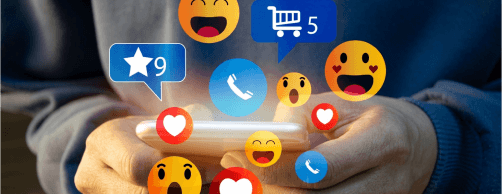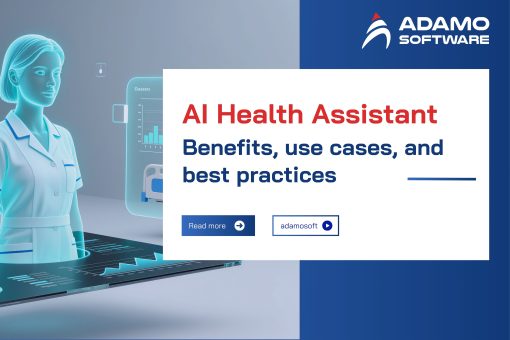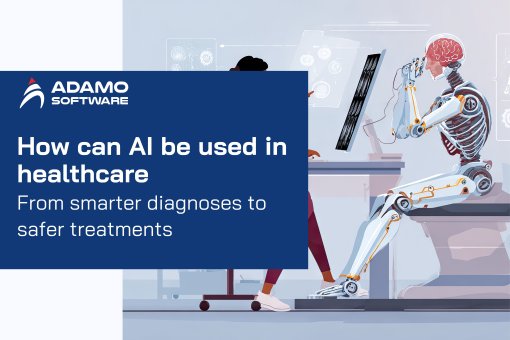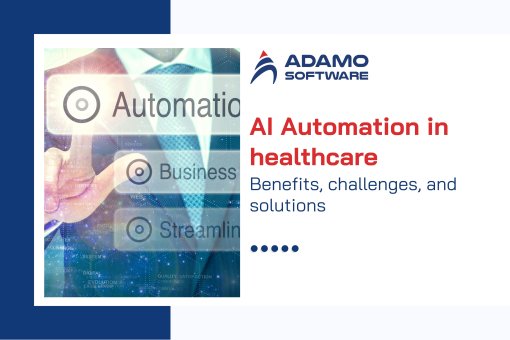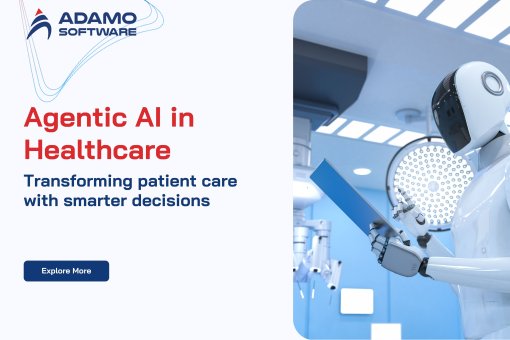What is healthtech: An ultimate guide for starters
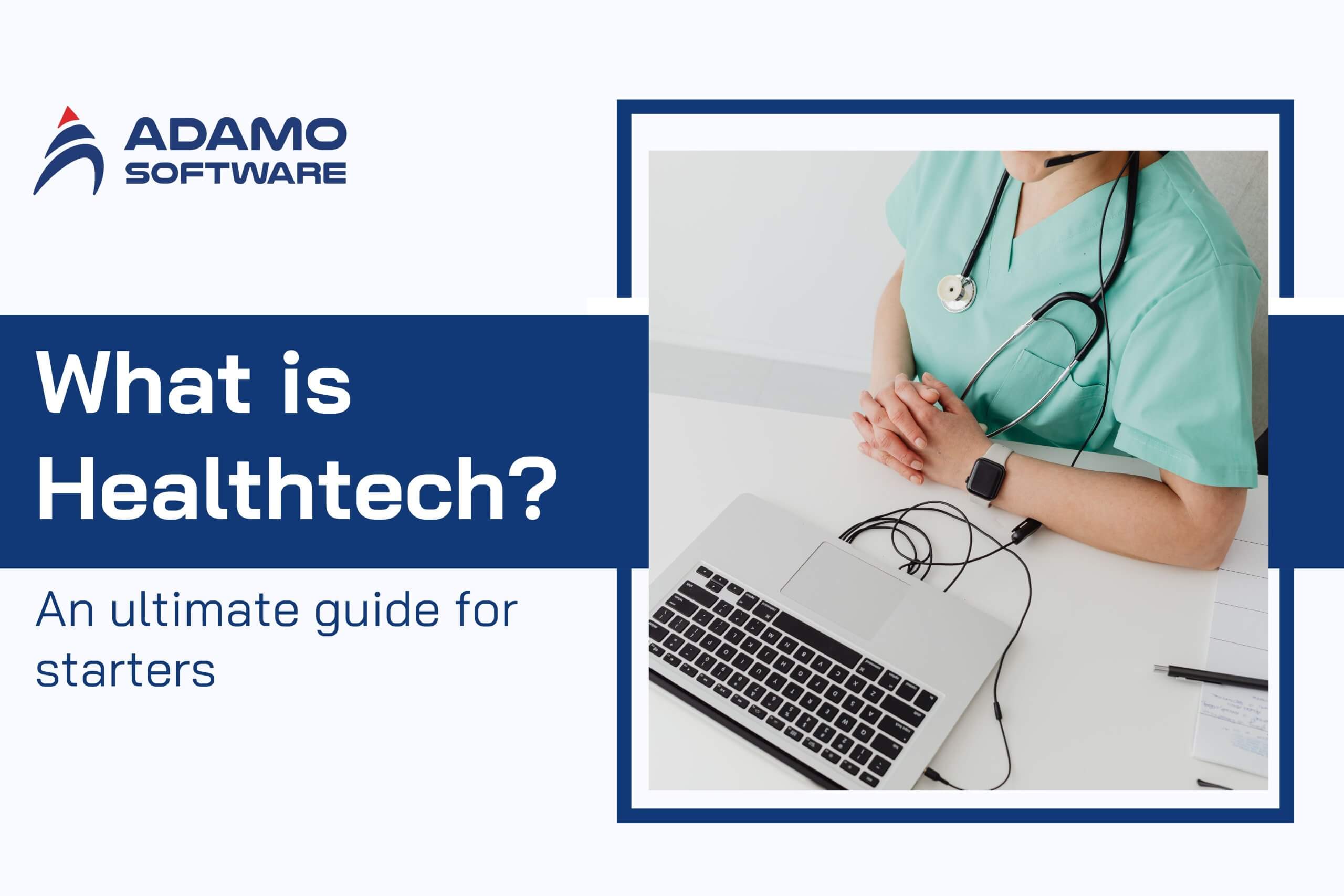
What is healthtech? Discover how digital tools like AI, and telemedicine are transforming healthcare for patients and providers worldwide.
What is healthtech, and why is it increasing so rapidly? Healthcare in our modern society is more than hospitals and physicians. Using new technologies, healthtech is providing people with quicker, more secure access to care. Healthtech is shifting our experience of healthcare, with us making doctor appointments online, having AI read our test results, and more.
With the industry expanding, healthtech is casting new hopes and new questions. How is healthtech responding to increasing patient demands? The population desires answer faster, access to health simpler, and wants to have power over their health. Healthtech actively strives to do so. However, this also creates hard problems with data security and expenses.
This article will present a concept like what is healthtech, what distinguishes it compared to medtech, and its advantages. We shall also examine the problems that healthtech is currently having. At the end of the reading, you can answer the question of what is healthtech and why it matters.
I. What is Healthtech and the evolution of the Healthtech industry
What is healthtech? In its essence, it entails taking advantage of technologies to advance our provision and access to healthcare. This encompasses such technologies as telemedicine, wearable fitness gear, mobile health applications, and remote patient monitoring. They are digital solutions that assist the patient in taking care of his or her health. They also aid physicians in making faster and more informed decisions.
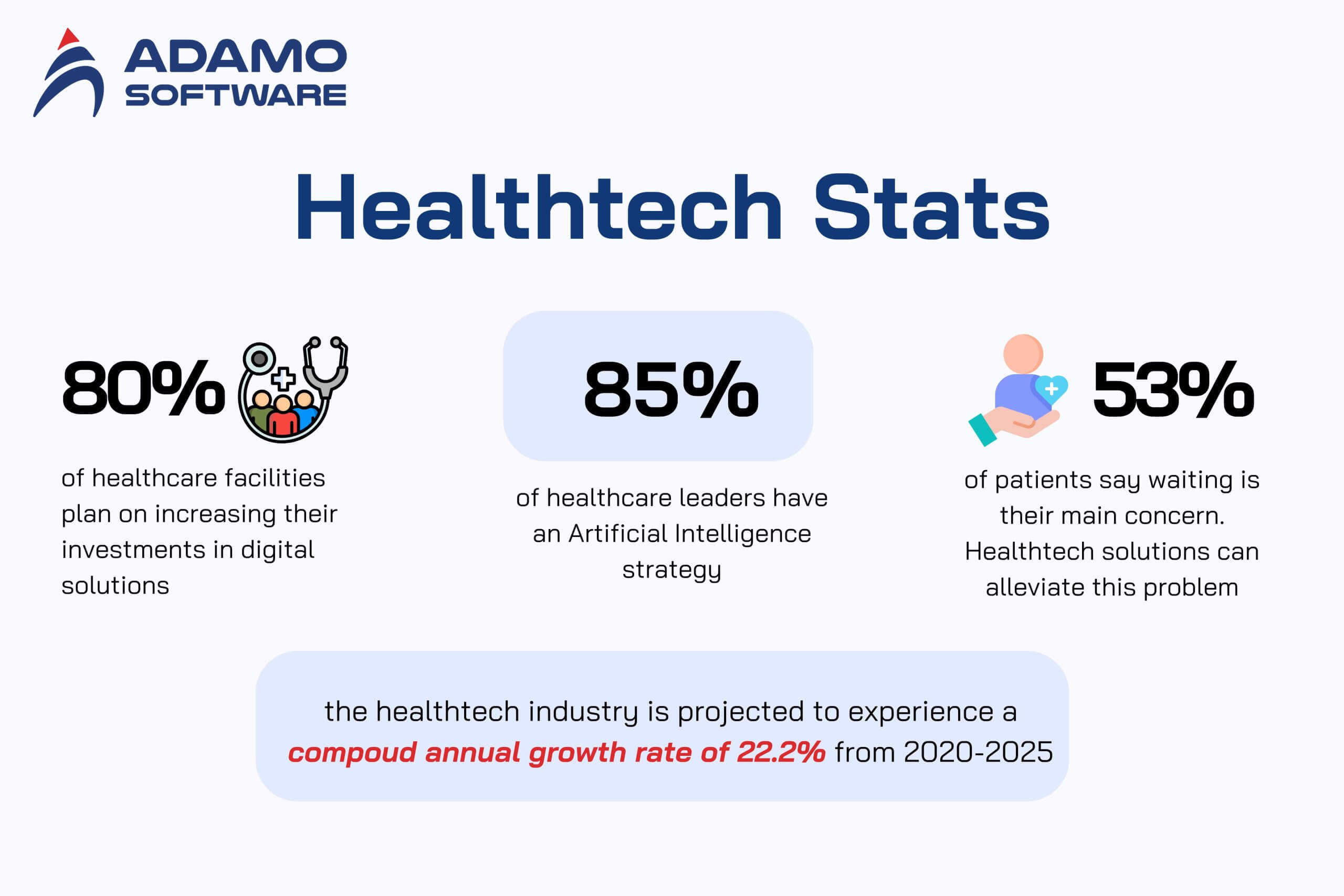
The global healthtech market is expanding rapidly. It is estimated to be worth about 908.5 billion dollars in 2023, and it is projected to hit 3.14 trillion dollars by 2033. As ranked by Allied Market Research, it is predicted to grow at 13.1% yearly. According to Grand View Research data, the digital health segment is expected to increase by about 19.5% per year from 2024 to 2030 in the U.S.
But then, what is healthtech in favor of patients? It is considering their soaring expectations. More patients are demanding speedier, simpler, and customized treatment. A report released on Carta Healthcare noted that 53% of the patients considered waiting time as their primary concern. Such technologies as telemedicine directly respond to this problem. Because of the COVID-19 pandemic, the number of telehealth visits in the U.S. increased to 46% in 2021, up from 11% in 2019 as reported on Wikipedia. At some point, the share of outpatient care conducted virtually exceeded 50%.
The adoption of a smarter, faster care model is evident. Over 85% of healthcare leaders currently have an artificial intelligence strategy. More than 80% of the facilities are considering upping their investments in digital tools (Insivia).
So, what is healthtech? It is not a tool, but it defines the future of healthcare. Providers have been forced to react quickly as new solutions have been coming up. Since what constitutes healthtech today is poised to be just the tip of what patients will want the next day.
II. HealthTech and MedTech: What are the differences?
Even though the two help in advancing healthcare, they focus on different aspects of the system. Healthtech is largely digital and applies to enhancing the interaction between patients and doctors. Medtech comprises physical treatment or diagnostic device tools and devices.
The table provided below explains the differences simply:
| Aspect | HealthTech | MedTech |
| Main Focus | Improves healthcare delivery and experience using digital tools. | Helps diagnose, monitor, or treat health conditions using medical devices. |
| What is it? | Software-based technologies like apps, platforms, and data systems. | Hardware-based tools like machines, implants, and instruments. |
| Examples | Telemedicine apps, electronic health records (EHRs), AI diagnostics, remote monitoring platforms. | MRI machines, CT scanners, insulin pumps, surgical tools, pacemakers. |
| User | Used by patients, doctors, nurses, or admin staff in daily care activities. | Mostly used by trained medical professionals in hospitals or labs. |
| Regulations | Often less regulated but must follow data privacy and safety standards (like HIPAA in the U.S.). | Strictly regulated (e.g. FDA in the U.S. and CE mark in Europe) due to patient safety risk. |
| Growth Area | Digital health market to grow at 19.5% CAGR from 2024 to 2030 (Grand View Research). | Global medtech market is expected to reach $718.9 billion by 2029 (Fortune Business Insights). |
What then does healthtech have to offer?
It grants additional control and access to care with digital systems to patients. What is healthtech not? It does not concern the physical machines in hospitals. Medtech, in turn, aids physicians in directly treating diseases by means of tools and equipment. The realization of what healthtech and medtech are can assist healthcare teams in selecting the appropriate tools to provide care.
You can explore more aspects in healthtech development here:
Healthtech Startups: 7 Reasons they Fail (And 5 Ways to Stay in the Game)
Vietnam’s Top Healthtech Companies: 7 Top leaders and how to evaluate them
III. What are the benefits of Technology in Healthcare?
Healthtech involves the application of digital technology and intelligent technology. It accelerates healthcare, makes it safer, customized, and more affordable. The savings exist and multiply. The following are some of the six major benefits, according to trusted studies.
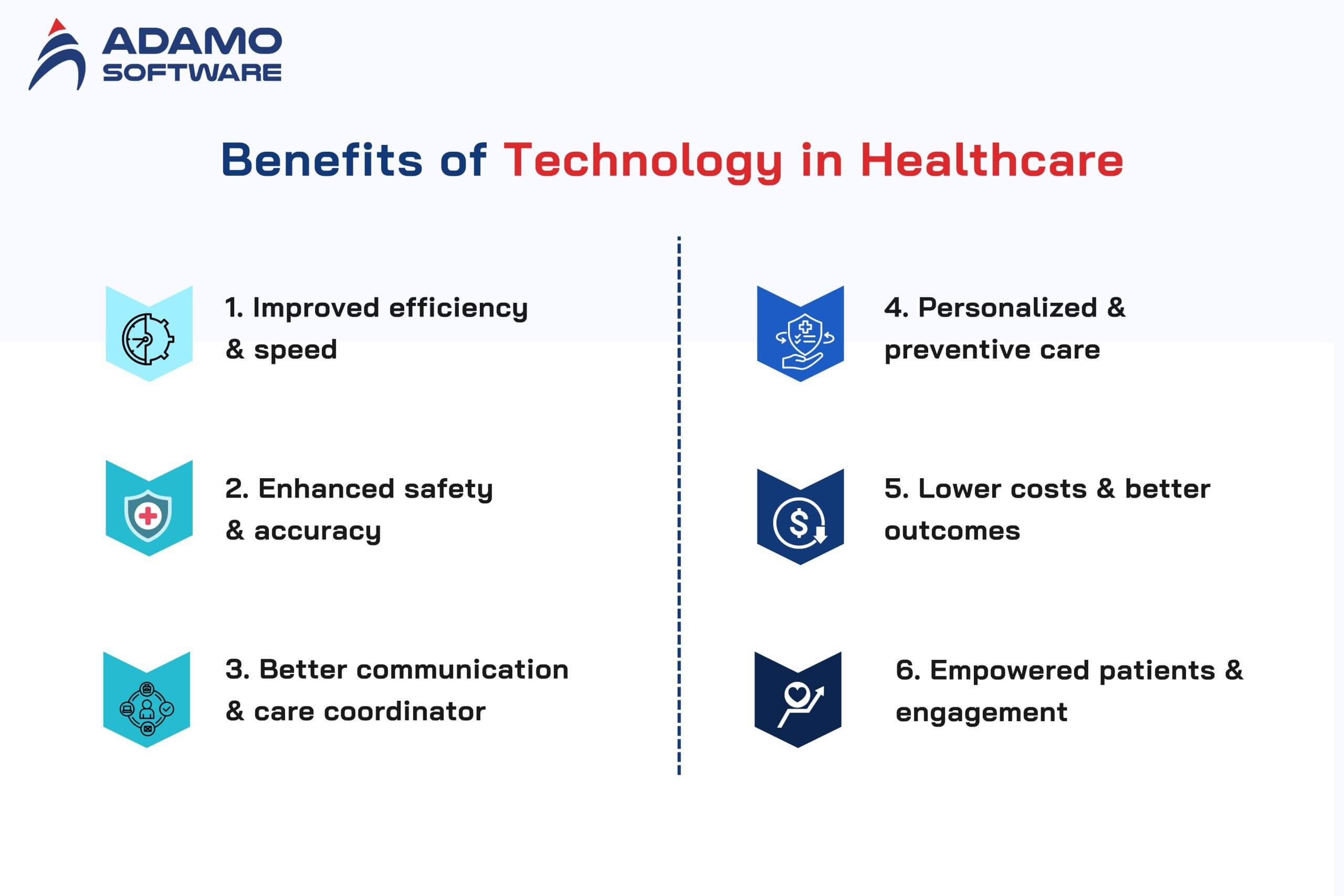
1. Improved Efficiency & Speed
- Electronic Health Records (EHRs) enable doctors to locate patient information more quickly. EHRs ensured the time to find patients during hospital admissions was decreased by 65% in a study (HealthIT.gov)
- Fewer paperwork implies that doctors and employees will dedicate more time to patients. It is estimated that today a little more than 90% of the clinics in the United States utilize EHRs (Northeastern University).
- Digital tools allow smarter planning where shifts and resources can be managed in the hospital.
So, what is healthtech doing in this situation? It is a time-saving measure, manual work-reduction, and the enhancement of daily care provision.
2. Enhanced Safety & Accuracy
- Computerized Provider Order Entry (CPOE) systems reduce the number of mistakes made regarding medication by up to 80%.
- E-prescribing systems remind physicians of unsafe drug reactivity and direct them through patient insurance details.
- Artificial intelligence is diagnosing diseases such as cancer at an earlier stage, enabling doctors to respond quicker.
To put it briefly, healthtech ensures care is less risky and stops harmful mistakes in their tracks.
Explore Our Tailor-made Software Development Solutions
We are confident in providing end-to-end software development services from fully-functioned prototype to design, MVP development and deployment.
3. Better Communication & Care Coordination
- Hospitals, clinics, and labs are currently connected by EHR systems. It is no longer challenging to collaborate via a care team (JMIR).
- Telehealth enables patients to communicate with physicians at a distance. This has also saved Medicare approximately 60 million dollars on travel expenses in 2018, with an upsurge in the forecasts (NCQA).
- Chat and email applications assist in faster updates, and improved follow-up.
In this case, the improved flow of information brought by healthtech enables doctors and patients to keep in touch and updated.
4. Personalized & Preventive Care
- The remote monitoring regimes reduced the number of visits made to the hospital and increased patient satisfaction. A study in India demonstrated a reduction in the cost by 25,000 to 12000 and increased satisfaction (80-95%) (PMC).
- Sensors such as glucose monitors notify users and doctors of initial health problems.
- Using the history of patients, AI and machine learning technology can be used to predict risks. There was one with 94% accuracy (arXiv).
What is healthtech bringing to the table here? It provides care that is person-centered and not disease centered.
5. Lower Costs & Better Outcomes
- Telehealth saved medical expenses by 1814 dollars a year in patient care, particularly chronic disease management (Health.com, Health Affairs Scholar).
- Medicare patients avoided more than 60 million dollars in travel costs in 2018 alone due to virtual visits (NCQA).
- Telemedicine for hypertension achieved a 22% ROI and leads to the enhancement of health efficiency and economic efficiency (medRxiv).
Healthtech is reducing total costs and maintaining a high quality.
6. Empowered Patients & Engagement
- Patient portals provide the opportunity to view test results and medical notes, where patients become loyal and confident in care decisions (Oracle).
- Applications and devices help to monitor dietary, sleep, and medication patterns.
- Open communication makes individuals more engaged in the process of their care.
In this case, the aspect that healthtech is transforming is the patient role, i.e.,. It makes this role an active one and transforms the follower into the partner, and so on.
IV. Key challenges of Healthtech
Healthtech employs digitalization in support of healthcare. However, there are some practical difficulties such as strict rules, privacy, and adoption problems. The largest opportunities and challenges of healthtech app development by far are presented below.
1. Regulatory & Compliance Hurdles
Healthtech solutions must support complicated regulatory requirements. In the U.S., any healthcare-related technology, that includes working with health data, should be HIPAA compliant. In the European Union, the law should be GDPR compliant. In case a product influences the clinical choices, then it might require FDA or EMA approval.
This hinders development by making it more costly and slower. New companies find it difficult to go fast and remain compliant. The regulatory environment of digital health is very fluid. It requires detailed knowledge of the law and sophisticated planning, just as STAT News elaborates.
2. Clinical Validation & Efficacy
Healthtech tools need to be shown to be safe and effective before launch. Peer-reviewed studies and clinical trials are usually required. However, a study published by MDPI suggests that only 20% of digital health products were well supported by clinical evidence with 44% not having any validation.
3. Data Privacy & Security
Health information is confidential, and hackers usually target it. Otherwise, when the systems are not secure, there is a possibility of leakage or theft of data on patients. An evaluation on arXiv revealed a significant threat to healthtech systems, particularly mobile apps, with a combination of lacking encryption and weak access control.
The Guardian also noted in another report that patient trust cannot be built without strong data protection.
4. Interoperability & Integration
Quite many hospitals do not use modern systems. These can hardly be related to new tools. EHRs, lab systems, and wearables might have information in disparate data formats. Therefore, it is difficult to transfer knowledge.
According to the Financial Times, 32% of patients encounter such problems due to the inability to share health records by providers. Such standards as HL7-FHIR are already assisting, but complete integration is complicated and costly.
5. Usability & User Experience
Healthtech tools can be developed and progressive but when difficult to handle, individuals will shun them. An article by the Guardian noted that low engagement occurs due to bad design, language challenges, and unclear inference.
To give an example, older users are overwhelmed by complex dashboards and apps that do not work in their local language. These ignore significant groups of patients.
6.Stakeholder Buy‑In & Adoption
Medical practice is a multidimensional area that concerns several decision-makers: physicians, nurses, IT experts, managers, insurers, and patients. It is hard to persuade everyone to utilize and believe in a new product.
Slow decision-making and testing capacity have been the key aspects that have stalled innovation in the UK’s NHS. Healthtech firms should involve stakeholders early and provide them with simple pre-trip benefits and training to be successful.
7. Long Sales & Adoption Cycles
Governments and hospitals have very expensive approval and purchase cycles. A deal can take some 12-24 months or more, particularly when the product has an effect on clinical activities.
This makes it difficult to raise startups and grow. B2B healthtech sales involve tolerating, evidence, and insistence, as explained in Insivia’s guide.
The above seven challenges include regulation, validation, data security, integration, usability, adoption, and sales cycles. They are the actual obstacles that determine the future of healthtech. Their solution will make companies grow and transform healthcare forever.
V. Final thoughts

We are a software development company that takes pride in being among the leading healthcare software development firms in Vietnam. We specialize in developing tailored digital solutions for international customers. Having many years of experience in the healthtech, travel, and food delivery sectors, we have the passion to find the best solution to complex industry specifications by using the latest technologies.
We have a staff of enthusiastic developers, creators, and project managers providing care to our clients, step by step. Our attention will be to the actual business requirements and clear communication and value in the long term. Our team will help you turn an app into a healthcare application. It can also be a complicated platform in case you need it that is functional, expandable, and easy to use.
We are not code writers here at Adamo Software but digital success builders. Then, regarding the question of what is healthtech, we tend to assume that the solution is smart, secure, and patient-centered technology. This can result in improved care experiences all across the globe.
FAQs
1. How is healthtech different from traditional healthcare tools?
The paper records or manual systems can be called the traditional tools. Instead, what healthcare brings is automation and intelligent capabilities. As an example, an AI-based system will identify preliminary cancer-related symptoms. Or there will be an app that will remind the patient to take medication. Healthtech streamlines health care and makes it easier to manage while being faster and safer.
2. Is healthtech safe for patient data?
Yes but only with the correct privacy regulations. The healthtech systems should be under strict data protection legislation such as HIPAA in the United States and GDPR in Europe. Yet, as NCBI points out, the issue of privacy is one of the most challenging ones. Therefore, secure coding, encryption, and solid user access are requirements among developers.
3. What is healthtech doing to make care more personal?
Using data, healthtech ensures that care plans become personalized. As one of the examples, wearable trackers can send health information to healthcare providers who can adjust treatment more quickly. Studies indicate that the patients in health apps become more engaged and content. That is what healthtech is enabling to go beyond one-size-fits-all to transform one-to-one care.
4. What is the future of healthtech?
What is healthtech expected to be? It is the future of healthcare. An increasing number of hospitals and medical clinics are deploying AI, remote monitoring, and virtual care products. The world digital health market will amount to 660 billion by the year 2028 (Statista). This implies that the healthtech will again have an even greater impact in saving lives and that of a patient.




